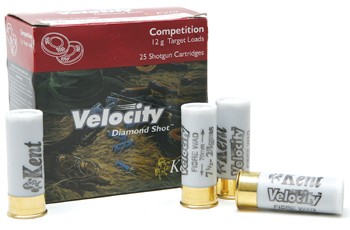Cheap shotgun cartridges review!

Cheap shotgun cartridges review!
Cheap shotgun cartridges: We’re all looking for cheap shotgun cartridges because, as if you hadn’t noticed already, money’s a bit tight at the moment and likely to remain so for a while yet.
There has been a lot of talk in the sporting press recently about what we can do to soften the blow to our wallets when we want to go shooting.
Much of the advice is based on plain commonsense. But with cartridges being a major expenditure in this hobby of ours, what exactly can we do to keep costs in check?
Over the past year we have talked about the use of steel shot and light load 21gm cartridges as a viable alternative, but these might not be everyone’s cup of tea.
I last wrote about the price of cartridges in the Spring of 2007 when the price of lead hit the dizzy heights of £1,000 per tonne.
Little did we know that it would more than double the following year. So let’s take a look at what is going on in the world markets now the recession is in full swing and assess the implications on cartridge prices.
The market price of lead is a major factor and is priced in US dollars.
From an all time high of over $4,000 in October 2007, the price of lead has now come back to around $1,000. You would have thought that that would be a drop of about 75% but sadly, because it is priced in dollars, you have to take into account the exchange rate.
In £s then, the cost at its height was around £2,000 when the pound was worth nearly two dollars, however as we all know, you currently only get about $1.50 to the GBP, so the current cost in sterling is just under £700, instead of the £500 you might have been expecting.
It is also worth noting that most manufacturers buy their lead forward by about three months, so this can have a significant impact after the price of lead has come down.
We have all noted that the price of lead has dropped considerably but we also need to take in to account the value of the £ against the Euro, which is currently not looking so hot.
It is in fact so poor that some importers of continental products are already talking about an imminent price increase of 9% or 10%.
With the GBP at virtual parity with the Euro this means that over the last year the costs to importers have risen by about 30% – a severe increase that cannot be offset even against the drop in lead and oil prices.
That’s the bad news, but there is some good news too. Firstly, Mr Brown in his infinite wisdom, decided to reduce the VAT rate by a massive 2.5% and cartridge retailers should have altered their prices accordingly.
Not a major reduction I’ll grant you, but a couple of quid is a couple of quid and in the words of Mr Tesco: “Every little helps!”

Now enter Gamebore, a company that’s something of a pioneer in the field of offering value for money. It was Gamebore that introduced steel shot clay loads at sensible prices before anyone else and their 21gm fibre lead load is still the most competitive on the market.
So what’s new, you ask?
Gamebore’s Kent Velocity brand, that’s what.
This is a standard clay load without the perceived disadvantages of steel shot or lighter loads. The 28gm cartridge is available with both fibre or plastic wads in shot size 7½ only.
The muzzle velocity of around 1,400fps makes the load suitable for most disciplines and the best thing about it is the unbelievable price.
You should be able to buy the plastic version at £125 per 1,000 (at least £6 less than the nearest competitor) and the fibre version at £135, again, a fiver cheaper than the best of the rest.
Gamebore tell me that this is not a limited run special offer, so it should be freely available at this price right through the clay season.
SMALL BORE CHALLENGE
You may remember me waxing lyrical in this column recently about the capabilities of the diminutive 28-bore against high driven birds.
Last month the friend I mentioned took his 28-bore on an extreme pheasant day alongside high pheasant specialist, Dave Carrie and I thought you might like to hear the outcome.
By coincidence Dave had just been quoted in another sporting magazine as saying extreme birds need the heaviest of 12-bore loads, long barrels and plenty of choke.
My friend, however, had 45 witnessed pheasants killed (that’s killed, not picked up half a mile back) for 231 shots from the 28-bore.
That’s a ratio of just over 5:1 – pretty respectable on that sort of stuff.
In my view therefore, I stand vindicated. Answers on a postcard, please!








